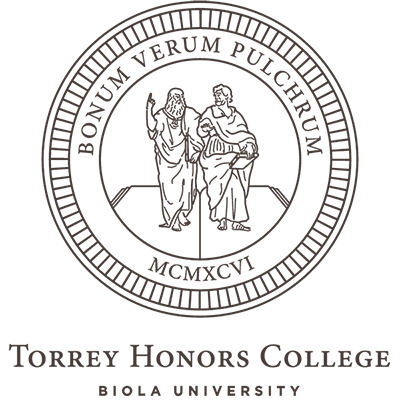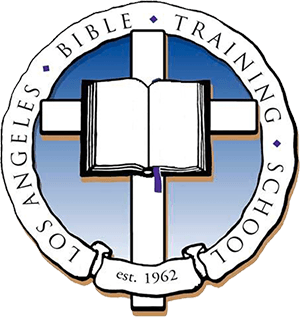A scene from the Leben der heiligen Altväter (1482)
Pauline Trinitarianism from The Trinity in the Canon
“Pauline Trinitarianism” in The Trinity in the Canon: A Biblical, Theological, Historical, and Practical Proposal, ed. Brandon D. Smith (Nashville: B&H Academic, 2023), 245-272.
Brandon Smith has edited an impressive set of essays on the Biblical doctrine of the Trinity, entitled The Trinity in the Canon (B&H, 2023). Weighing in at 15 chapters in 483 pages, the volume is a very helpful guide to reading Scripture to grasp God’s self-revelation as Father, Son, and Holy Spirit. It has crucial chapters on the early church, modern Biblical scholarship, preaching, worship, and apologetics. But the book’s main bulk is a ten-chapter walk-through of the major sections of the Bible that contain instruction on the subject.
By commissioning distinct chapters on each of these major Biblical voices, Smith’s project (or “proposal,” as the sub-title has it) fills a major gap in the standard literature. Instead of simply surveying something as broad as “the synoptic Gospels,” here we get full chapters on Matthew, Mark, and Luke (by Pennington, Emerson, and Stamps respectively). Getting that granular with the Biblical witnesses is, perhaps surprisingly, not unduly repetitive. In fact, it pays off richly because these three evangelists construct their arguments differently –once you start looking closely. As a result of this strategy of closer attention and more detailed exposition, the Trinitarian theology that emerges feels like a much more natural fit with the Biblical texts, rather than something imposed from above by systematic/dogmatic decision-makers. As helpful as broad-and-brief surveys of the Bible may be for showing the big picture, the resulting blur-out of details can weaken the impression that actual exegesis is being carried out. Big Book to the rescue!
Scott Swain’s chapter on John is one of the best things I’ve read all year: Swain wrote a book on the subject many years ago and has kept thinking more and more deeply on the subject, to great effect. Several other chapter have the same benefit of long gestation: Pierce on the state of play in NT scholarship, Schreiner on Hebrews, Lockett on the Catholic Epistles, Smith himself on Revelation.
I got to write the chapter on the Trinity in Paul’s letters. This corpus would also have benefitted from more hands on deck, more detailed subdivision, and deeper detail. But to take it all in at once, I left Paul’s developed pneumatology, Christology, and doctrine of God the Father in the background as presuppositions, and traced only the actual triadic patterns of argument that emerge: the places where Paul’s account of the one God behind salvation requires the reader to count to three.
Here’s a brief excerpt from my chapter:
There is, in the letters of Paul, a profound theology of the God of the gospel. He is the God of Israel, whose character and identity cannot be grasped adequately except in terms of Jesus Christ “his own Son” (Rom 8:3) and the Holy Spirit, because of their saving work. More than any other New Testament author, Paul has a way of arguing back from the gospel to the Trinity. To put the point more precisely in terms of its literary foundation (the Pauline epistles), what is unique about our collection of Paul’s letters is that these writings are a substantial and intellectually cohesive group of documents deeply embedded in the complex, congregational life of the early church. Their author engages primarily in authoritative discourse about the experiences and challenges of communal Christian existence, but he does so by constantly placing those immediate concerns against the largest possible spiritual horizon, in close connection with the Hebrew Scriptures as interpreted for Gentile Christ-followers.
Accordingly, the contribution of Paul’s letters to the doctrine of the Trinity is that they give the doctrine a certain salvation-historical and experiential character. This character is not entirely lacking from other New Testament voices, of course: Johannine and Synoptic texts also originate from particular settings, offer interpretations of God in light of salvation history, and address the original audience’s experiences. But since the literary structure of a Gospel follows the life of Christ narratively, the contextual concerns of the original audience may be present, but are not introduced thematically in any sustained manner. Even a corpus like the Catholic Epistles, being more definitely intended for circulation to a general readership, have fewer opportunities to engage particular, local issues for specific congregations. The Pauline epistles, by contrast, enter directly and thematically into the controversies of particular Christian communities. The doctrine of God articulated by the Pauline epistles is consequently more directly engaged with the doctrine of salvation. So while it is not exclusive to Paul’s writings, nevertheless salvation-historical, experiential Trinitarianism is present in Paul’s letters with particular clarity.
In the history of the doctrine of the Trinity during its classical, patristic period (from the Apostolic Fathers to about the fifth century), the voice of Paul did not go unheard. He was widely cited and his writings have been magisterially present. Certain key Pauline texts on Christology (Col 1, Phil 2) and pneumatology (Rom 8, I Cor 12) have been especially pervasive throughout early Christian theology. It would be unseemly to try to present Paul as some kind of neglected voice in any locus of Christian theology! Nevertheless, his role in shaping the church’s elaborated doctrine of the Trinity is in certain ways a matter of some subtlety. His salvation-historical Trinitarianism, with its long lines of covenantal continuity, its alertness to the forward-leaning orientation of the Old Testament, and its depth of ingression into Christian experience, constitutes part of the solid foundation and structure of traditional Trinitarianism. But it is often foundational in the sense that it remains safely below the surface, and structural in the sense that it stays inside the walls of the house like support beams. Other canonical articulations of Trinitarianism, while not more formative than Paul’s, are more conspicuous.
The two key examples of relatively more conspicuous New Testament Trinitarianism will help us appreciate, by way of contrast, the supporting role played by Paul. To John’s Gospel belongs the prize of having provided the early church with nearly all the key terms, categories, and arguments that would be gathered together and arranged into classic Trinitarian theology. As T. E. Pollard showed in his book-length treatment of Johannine influence, “it was St. John’s Gospel, with its Logos‑concept in the Prologue and its emphasis on the Father‑Son relationship, that raised in a most acute way the problems which led the church to formulate her doctrines of the trinity and of the person of Christ.” Logos and monogenes, parakletos and ekporeusis (John 1:1; 1:14; 14:15; 15:26): this is the basic vocabulary of conciliar Trinitarianism, and it is all Johannine. Connecting these vocabulary terms are argumentative moves that the pro-Nicenes learned directly from the disposition of John’s Gospel, and usually developed by way of commentary on John. See for instance the way John 5:20 (“the Father loves the Son and shows him all that he himself is doing”) is the constant reference point for the articulation of the doctrine of the inseparable operations of the Trinity ad extra. We might imagine how the early church could have formalized the doctrine of the Trinity without employing John’s language and thought forms, but to do so would be a feat of sheer counterfactual imagining. It is important to bear this in mind while reading Paul for his Trinitarian theology, since so many of John’s key terms do not occur in Paul, and Paul needs to be understood within his own thought forms rather than by running contrast with John. It takes some effort for readers to shake loose from the standard forms set by John.
If Paul is not John, he is also not Matthew, and in particular his work is not Matthew 28:19. The baptismal formula, with its definitive triadic structure of “the Father, the Son, and the Holy Spirit” has a unique role in classical Trinitarianism. It serves as a kind of resting-point for the theological consciousness, which lets theological statements settle down into an authoritative form of words. It functions as a name, and makes every other formulation seem like a paraphrase that is waiting to be resolved back into the actual name. This, too, matters for a proper interpretation of Paul, who never uses exactly the same formula as Matthew 28 –who, in fact, never quite settles down into any single form of words for himself in speaking about God, Christ, and the Spirit. In what follows, I will often quote Paul’s own words and then explain them using the baptismal formula (Father, Son, Holy Spirit). The goal is not to press Paul himself in the direction of terminological orthodoxy, but to help us as readers: Our ears are almost inescapably tuned to the stable, traditional formula derived from Matthew, and we can hardly tell we are talking about the Trinity at all if we do not hear this formula. At least it greatly helps us know we are discoursing on the Trinity when we interpretively paraphrase Paul’s “God-Lord-Spirit” or “Christ-God-Spirit” or “Spirit-Jesus-Father” to “Father-Son-Holy Spirit.” The goal is not to norm the apostle’s usage, as if it were our place to correct him in the direction of orthodox speech. In fact, it is crucially important to let Paul be Paul, not only for the sake of historical-grammatical honesty, but also for the sake of the church’s overall trinitarian theology, which needs to be continuously informed and enriched by these very Pauline patterns of teaching the Trinity. With both John and the baptismal formula in the background, sensitive readers will let the canonical influences circulate freely, reminding themselves that the familiar formula “Father, Son, and Holy Spirit” has ample room in it for Paul’s salvation-historical structures, the variety of his
names and titles, and what seem to be his omissions.
The Trinity in the Canon is available from the publisher (B&H) and Amazon.
 Fred Sanders
Fred Sanders

